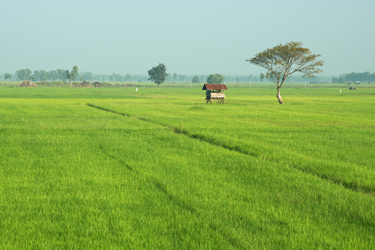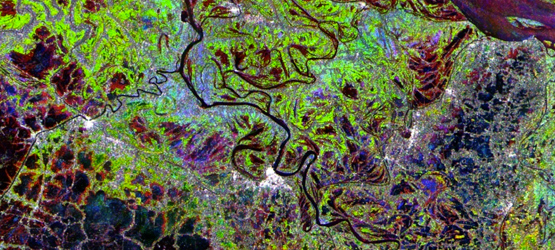Mapping & Forecasting
The data-sets captured by the satellites are processed through a dedicated software that decodes the remote sensing data and makes them readable as maps. The key mapping and forecasting products that RIICE has been delivering based on remote sensing recognition are:
• Rice area maps in Southeast Asia
• Continuous observation of rice growth across Southeast Asia
• Actual rice yield information at harvest time
• Rice yield forecasts before the season is complete
• Rice Ecosystem Map
• Ad-hoc flood and draught maps in case of extreme weather events
Rice yield information is based on a crop growth simulation model that estimates rice yields based on: SAR (synthetic aperture radar) imagery for planting dates and crop growth rate information; current and historical information on daily weather conditions and soil; and crop management and variety information. These yield maps are used by RIICE national partners to model a yield index which can later be made the triggering basis for an insurance product.
The rice crop growth model is based on Oryza2000, a model that simulates rice growth under different environmental conditions. The input data for Oryza2000 are generated by sarmap, IRRI and RIICE national partners and the results are validated by RIICE national partners by means of crop cut experiments across the target regions. Oryza2000 is used to estimate yields after harvest and also to forecast the expected yield before the season is complete.
Gaining yield information can address several problems, in particular:
• It can help governments and other stakeholders to adapt their economic policies, such as making decisions on importing more rice if a food crisis could be imminent or exporting more if it is felt that rice yields will be sufficient;
• it can enable relief organizations to better anticipate and coordinate relief efforts in the wake of a natural catastrophe;
• it can provide the technical backbone of an insurance solution where risks of yield losses from the rice smallholders are transferred to the insurance market.
(Image: sarmap)










